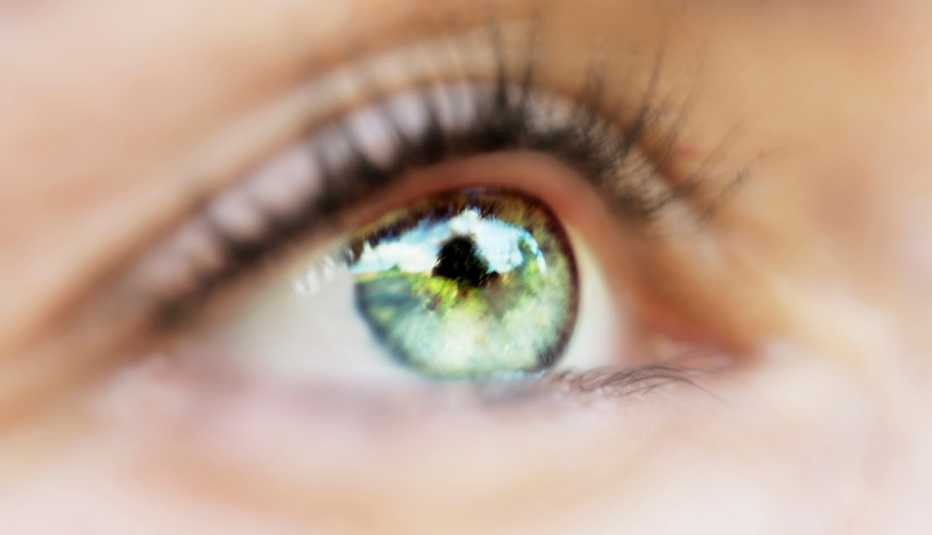AARP Hearing Center


At some point, you’ve probably wondered what the rarest eye color is. The answer is green, according to the American Academy of Ophthalmology (AAO). Only about 2 percent of the world’s population sport this shade.
As to why, that answer isn’t so simple. “We used to think only one gene determined eye color,” says Julie Kaplan, M.D., a physician at the Center for Personalized Genetic Healthcare at Cleveland Clinic. In high school biology class, for example, you probably learned that brown was dominant and blue was recessive, so two blue-eyed parents would not be able to have a baby with brown eyes. The truth, however, is a bit more complicated, Kaplan notes.
What determines your eye color?
About 75 percent of eye color is due to one gene, OCA2. It makes melanin, a substance in your body that produces hair, eye and skin pigmentation. If you inherit two nonfunctional copies of the OCA2 gene from your parents, you will go on to develop blue eyes. But if you have at least one functional copy, your eyes will be darker, on the spectrum of green, hazel or brown.
Eye Color in the U.S.
The American Academy of Ophthalmology surveyed more than 2,000 Americans to determine what color eyes they have. Below are the results of that 2014 Harris Poll survey.
- 45 percent had brown eyes
- 27 percent had blue eyes
- 18 percent had hazel eyes
- 9 percent had green eyes
- 1 percent had eyes a color not listed above
Note: Survey weighted to reflect the United States population at that time.
In case you were planning to decorate your impending grandbaby’s nursery to match the color of their eyes, be prepared to be disappointed. It is impossible to predict what color their orbs will be.
“There are several different genes involved, which we’re just beginning to learn about and understand,” Kaplan explains. HERC2, for example, is a gene that turns the OCA2 gene on or off as needed. Different variations of it can cause the OCA2 gene to produce less melanin, which leads to lighter-colored eyes. There are at least eight other genes that influence eye color. In the meantime, you can take comfort in the fact that your own eye color is like your fingerprints: something that is unique to you.
The original human eye color
Brown eyes are the most common: Over half the people in the world have them, according to the AAO. In fact, about 10,000 years ago, all humans had brown eyes. Scientists speculate that their elevated levels of melanin helped protect people from the sun’s damaging rays. But as people moved from the sweltering climates of Africa and Asia to the cooler environments of Europe, there was less need for this protection.
At some point in history, as humans migrated north, a gene mutation occurred to reduce melanin production, says Kaplan. When the eyes have less melanin, they absorb less light. That means more light is scattered out from the iris, or colored part of the eye, which reflects off the surroundings. Eyes with the smallest amount of melanin in them will appear blue, while those with a little more melanin will appear green or hazel.




































































More on Eye Health
New Vision Tests and Technology Can Help Save Your Sight
Open your eyes to these bright new solutions10 Everyday Things You Can Do to Protect Your Sight
Stick with these healthy habits to lower your risk of eye problems as you ageIs Eye Disease Putting You at Risk for Blindness?
Early diagnoses of glaucoma, macular degeneration and more can save your sight